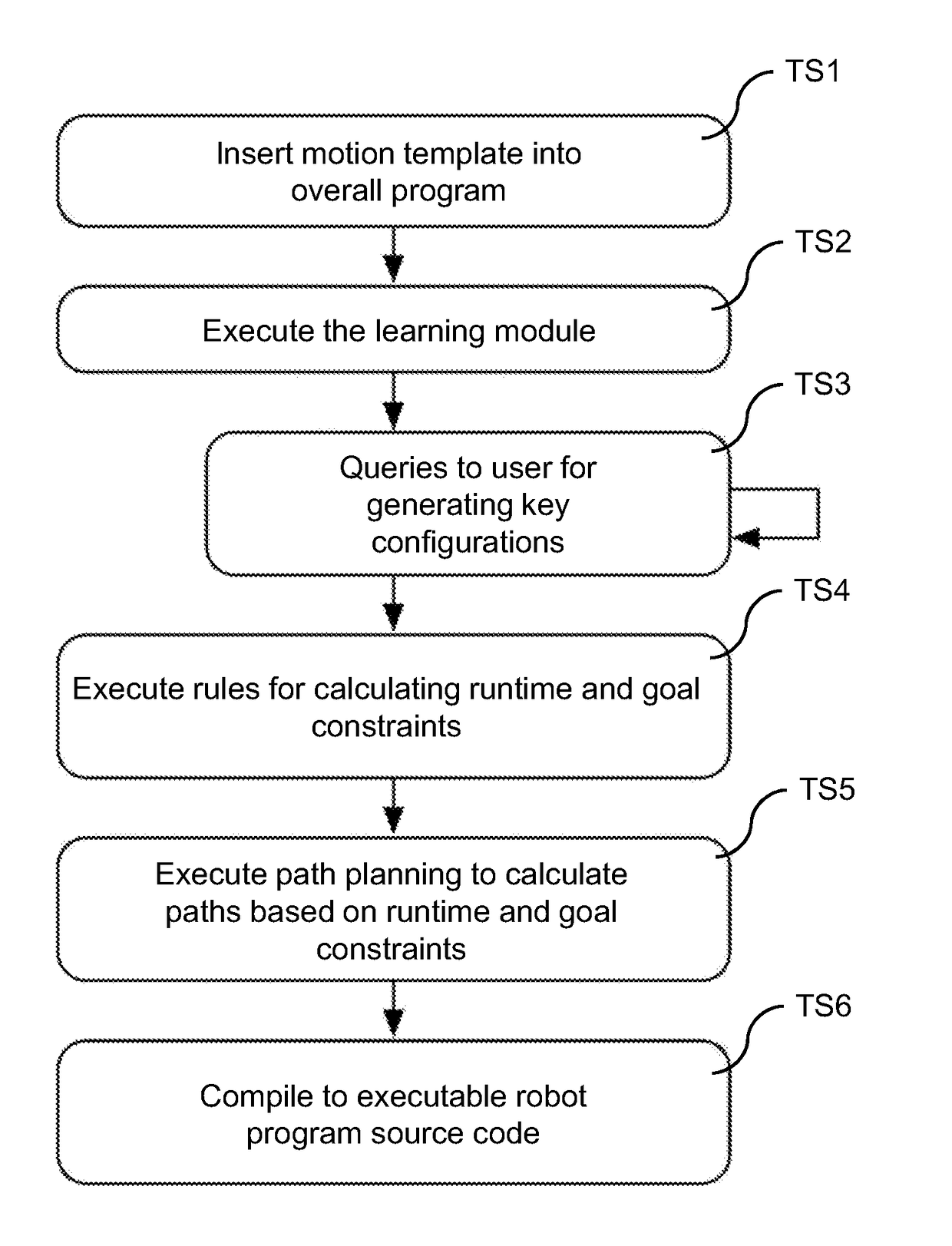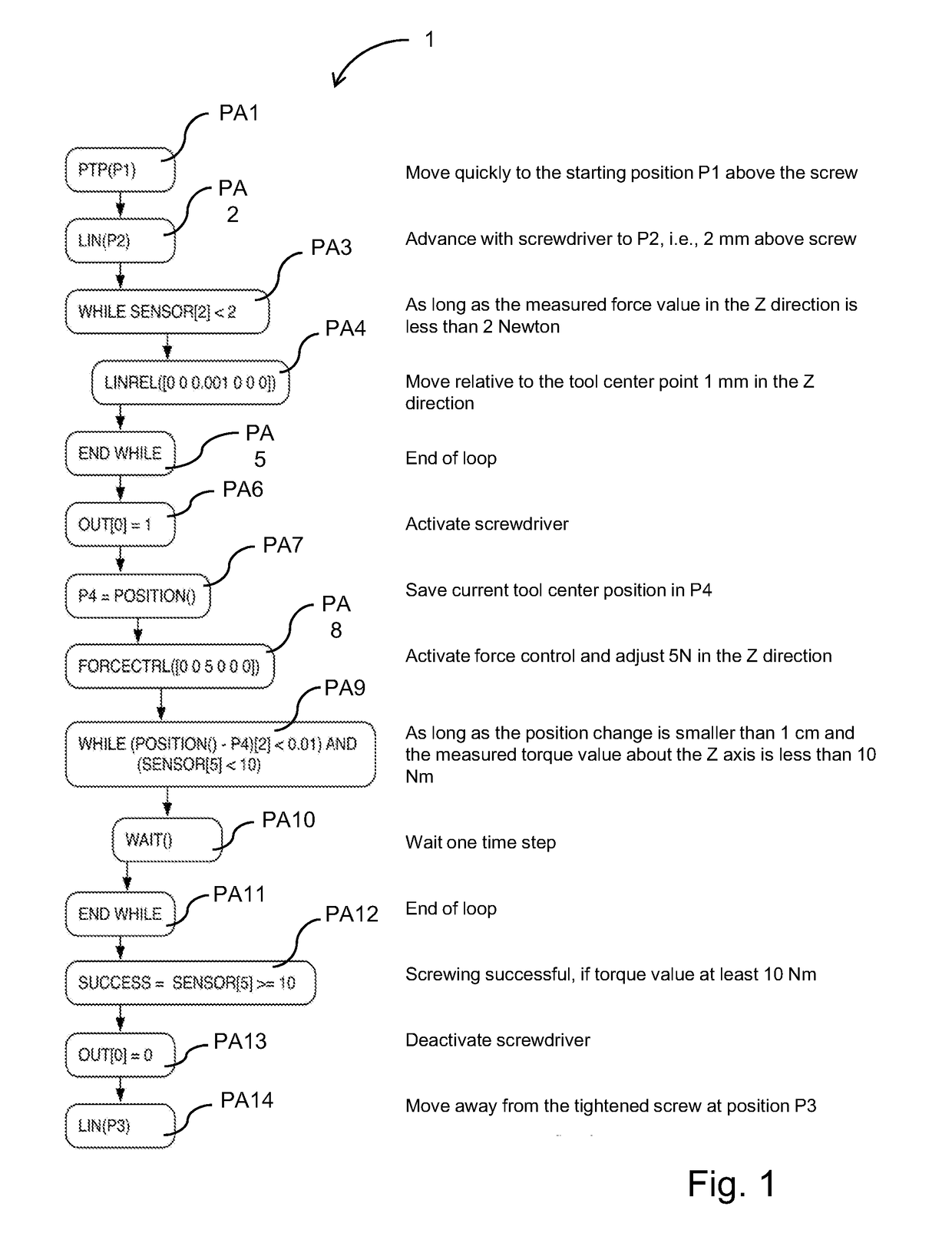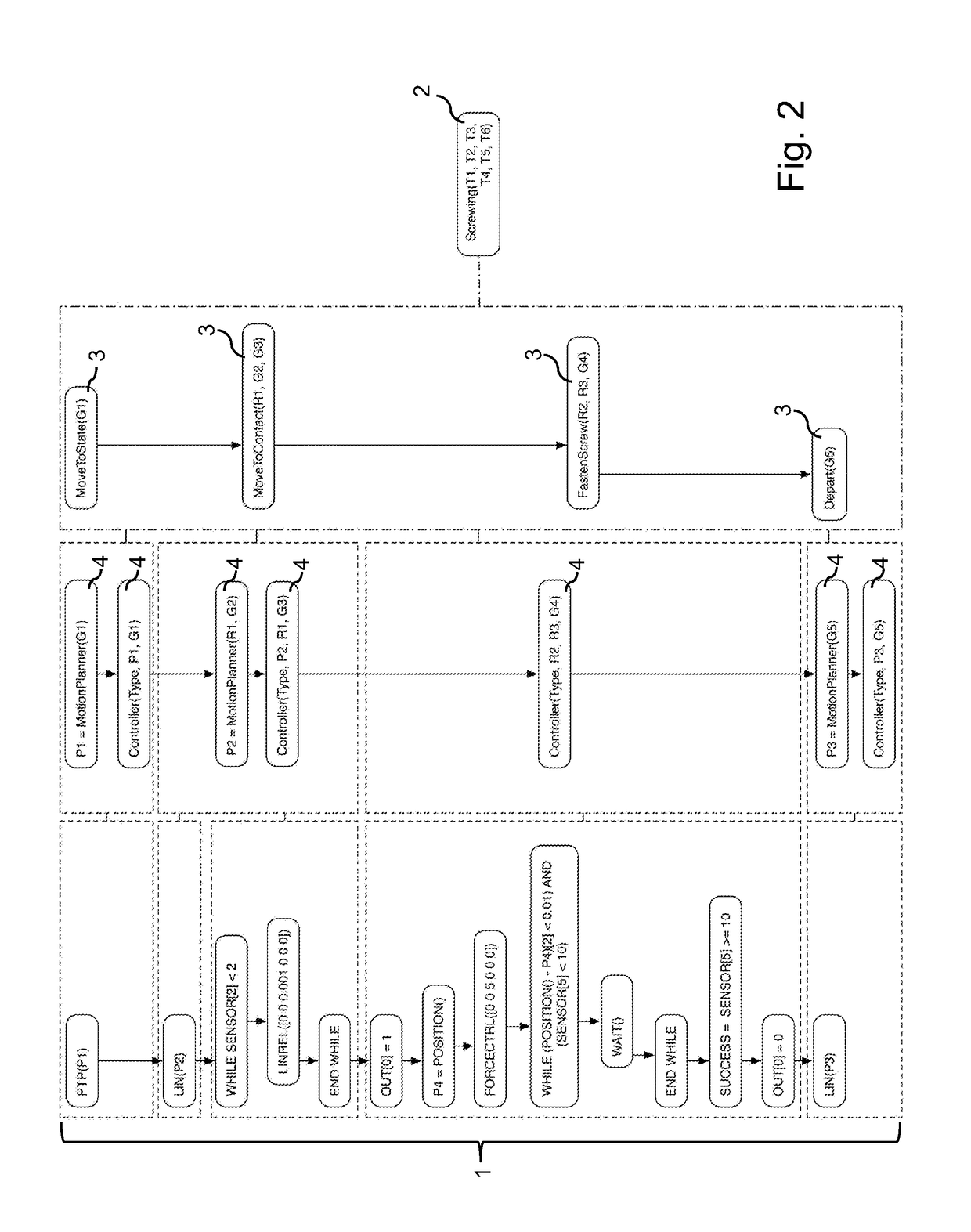Method and system for programming a robot
a robot and programming system technology, applied in the field of robot programming methods and systems, can solve the problems of difficult programming, calibration between the real work cell and the simulation, provision of cad models, and the necessary adaptation of minor variances, and achieve the effect of simple and robust robot programming
- Summary
- Abstract
- Description
- Claims
- Application Information
AI Technical Summary
Benefits of technology
Problems solved by technology
Method used
Image
Examples
Embodiment Construction
[0188]The figures FIG. 1 to FIG. 12 comprise an example of a common application, i.e., the programming of a robot to screw a screw into a workpiece up to a specific torque by means of a robot.
[0189]FIG. 1 shows a schematic view of an exemplary robot program 1 that a human would create manually, according to the prior art, to accomplish screwing a screw up to a pre-determinable torque with a robot. In the specific case the robot program 1 comprises, according to FIG. 1, instructions or robot commands, intended for executing / doing the said task, and, in particular, in the way that a human would have to manually program or create them at the present time. The boxes are individual robot commands with parameters. P1, P2, P3 and P4 are taught points that were manually integrated, preferably by the programmer, into the program as the parameters. SENSOR[2] reads the Z value of the force / torque sensor on the robot; SENSOR[5] reads the torque about Z. OUT[0]=1 or 0 activates or deactivates th...
PUM
 Login to View More
Login to View More Abstract
Description
Claims
Application Information
 Login to View More
Login to View More - R&D
- Intellectual Property
- Life Sciences
- Materials
- Tech Scout
- Unparalleled Data Quality
- Higher Quality Content
- 60% Fewer Hallucinations
Browse by: Latest US Patents, China's latest patents, Technical Efficacy Thesaurus, Application Domain, Technology Topic, Popular Technical Reports.
© 2025 PatSnap. All rights reserved.Legal|Privacy policy|Modern Slavery Act Transparency Statement|Sitemap|About US| Contact US: help@patsnap.com



